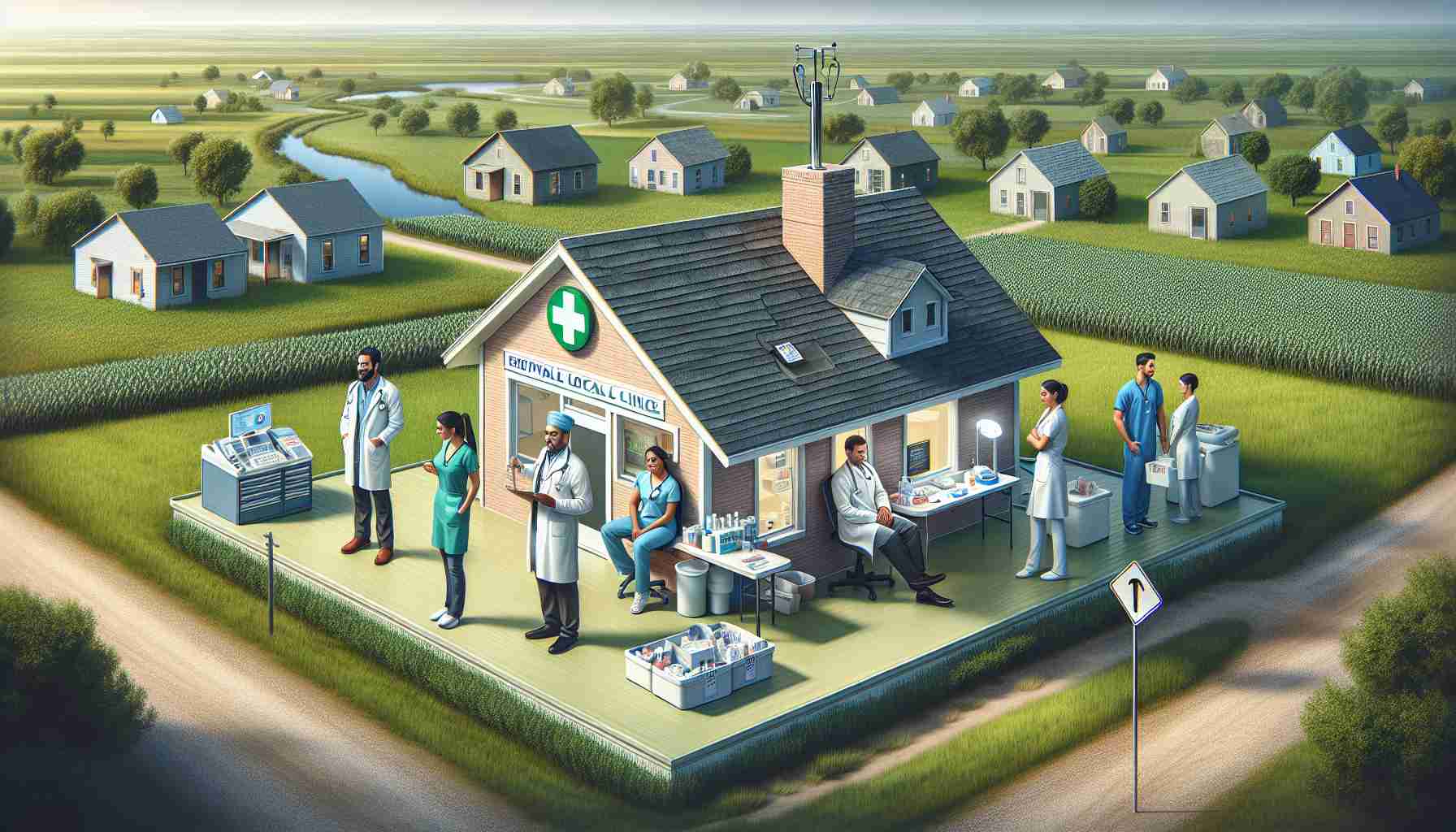In a remote town in North Carolina, a former hospital now stands deserted, a sad reminder of the once vibrant healthcare provided to the community. But amidst the financial struggles and closures faced by rural hospitals across the nation, a new ray of hope emerges.
Local residents, like Christopher Harrison, recall the closure of Martin General Hospital with a heavy heart. However, innovative solutions are now being explored to prevent such closures in the future. Recent changes by the Centers for Medicare & Medicaid Services have led to the conversion of hospitals in 32 communities to a rural emergency hospital designation, offering a lifeline to struggling healthcare facilities.
Rather than a complete replacement for traditional hospitals, the new model focuses on providing essential emergency and outpatient services to communities on the brink of losing their healthcare lifeline. The shift towards outpatient care and the financial support provided under the new designation offer a glimmer of hope for communities like Martin County.
Health consultants are working with local officials to explore the possibility of reimagining the shuttered hospital as a rural emergency hospital model. This transformation could not only revive access to critical emergency services but also pave the way for enhanced Medicare payments and technical assistance, essential for the sustainability of rural healthcare facilities in the long run.
As the community awaits the potential revival of its healthcare services, the challenges of recruiting healthcare workers and ensuring financial sustainability loom large. Yet, the promise of rebuilding a vital healthcare hub in a rural setting underscores the resilience and determination of communities to safeguard their well-being.
While the success of the rural emergency hospital model is still unfolding, the shift towards preserving essential healthcare services in rural communities marks a pivotal moment in ensuring equitable access to healthcare for all.
Reviving Healthcare Access in Rural Communities: Unveiling the Untold Realities
What are the key challenges associated with the revival of healthcare access in rural communities?
Amidst the optimism surrounding the conversion of struggling hospitals into rural emergency facilities, crucial questions arise regarding the sustainability and effectiveness of this new model. The foremost challenge lies in recruiting and retaining healthcare professionals in remote areas, where the shortage of medical personnel is already a pressing issue. Ensuring consistent staffing levels and access to specialized care remains a critical concern as these rural emergency hospitals strive to meet the healthcare needs of their communities.
What advantages and disadvantages come with the new rural emergency hospital designation?
On one hand, the shift towards outpatient and emergency care offers a lifeline to communities facing hospital closures, ensuring continued access to essential medical services. The financial support and technical assistance provided under this designation can significantly bolster the viability of rural healthcare facilities. However, the potential limitations of not having comprehensive inpatient services available may pose challenges for patients requiring ongoing or specialized treatment. Balancing the advantages of increased support with the constraints of a streamlined model will be crucial in determining the long-term success of rural emergency hospitals.
Key Unveiled Facts:
Beyond the initial narrative of hospital closures and revitalization efforts, additional aspects shape the landscape of healthcare access in rural communities. Data reveals that the closure of a rural hospital not only impacts medical services but also has broader economic repercussions, leading to job losses and reduced access to healthcare for vulnerable populations. Addressing these interconnected challenges calls for a comprehensive approach that goes beyond temporary fixes to build sustainable and resilient healthcare systems in rural areas.
While progress has been made in transforming healthcare delivery through the rural emergency hospital model, ongoing evaluation and adaptation are essential to ensure its effectiveness in meeting the diverse healthcare needs of rural communities. Navigating the complexities of funding, infrastructure development, and quality of care will require collaborative efforts between policymakers, healthcare providers, and local residents to pave the way for lasting improvements in healthcare access and outcomes.
For more insights on healthcare innovations and rural health initiatives, visit Health Affairs.
This updated article sheds light on the multifaceted nature of reviving healthcare access in rural communities, emphasizing the need for sustainable solutions that address the underlying challenges while harnessing the potential of innovative models to enhance the well-being of rural populations.
